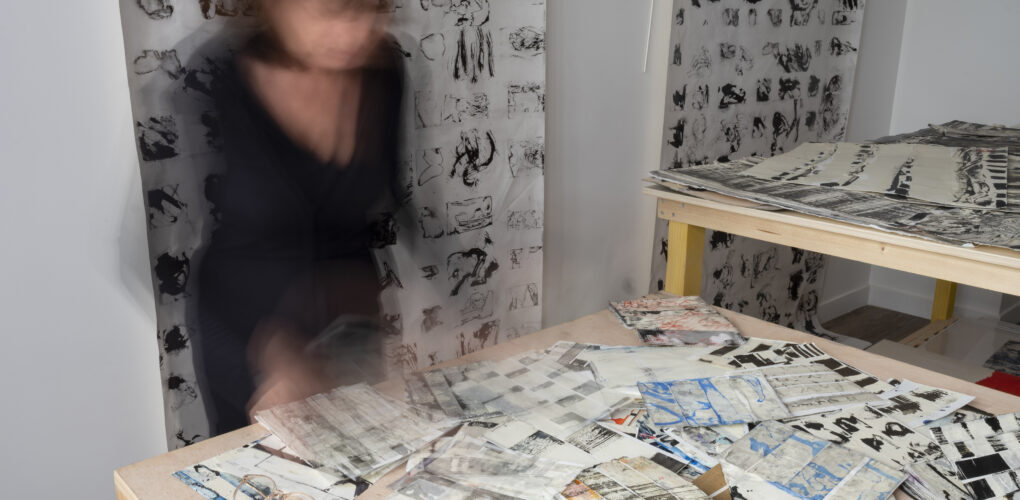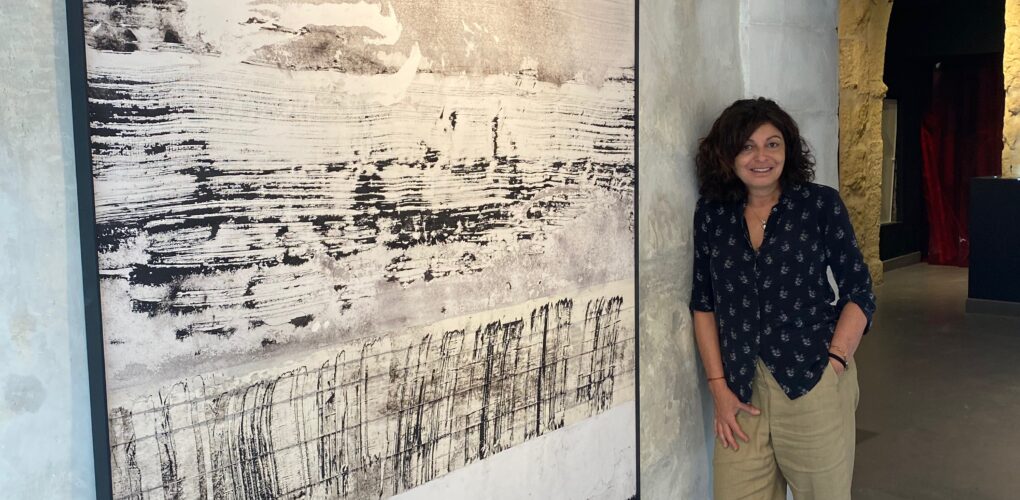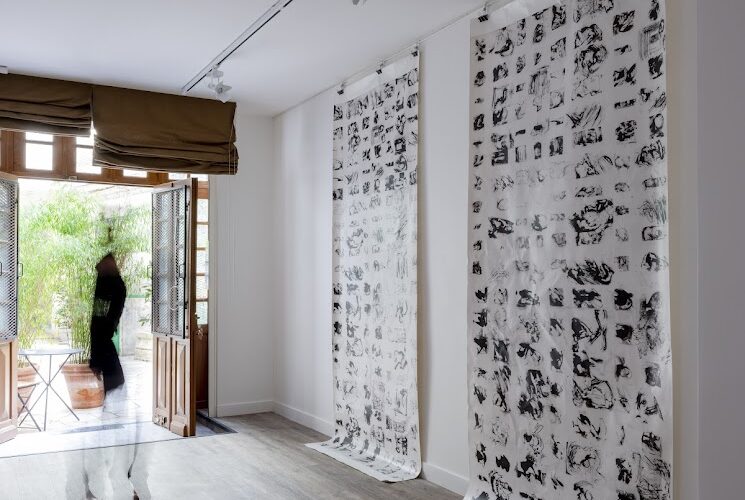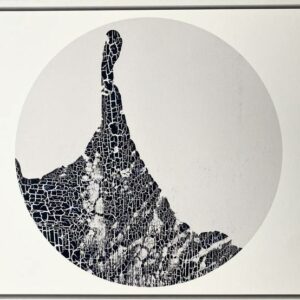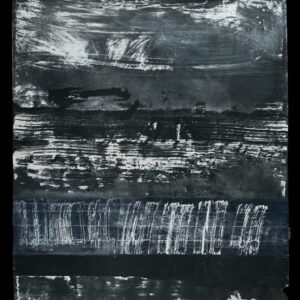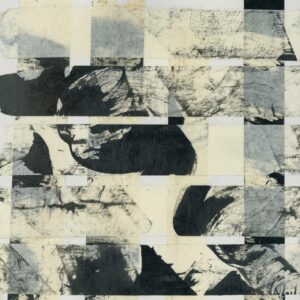Art We Love
 Anne Gracia’s Inner Monologues
Anne Gracia’s Inner Monologues
What are the major themes you pursue in your work?
Shadows and light.
These themes became gradually apparent to me. After reading Tanizaki’s essay “In Praise of Shadows” and being introduced to Japanese aesthetics, I started to paint and draw almost exclusively with Indian ink. I wanted to study this material and find out everything about it: its texture, how it reacts on different surfaces (cardboard, ribbons, paper, canvas), and the right brushes to spread it. The more I tried to understand the behavior of Indian ink; the more my imagination expressed itself in black and white and shadows and light. In addition to India ink, I’ve started experimenting with different textures and depths, bringing a new dimension to my compositions of shadow and light.
How did you first get interested in your medium, and what draws you to it specifically?
I have been working on thick notebooks for many years now. They are not sketchbooks or draft books. Each page of these notebooks is a work of art in its own right.
On these pages, I randomly apply ribbons, draw with India ink, add splashes of watercolor, and crumple and cut pieces of paper.
What I like about working with notebooks is that, at first glance, the notebook appears to be an everyday object and one that’s easily carried around with me. But once all the pages are painted, it becomes the vessel that holds all my creative energy—a precious thing created in total freedom, without the fear of missing anything or doing something wrong.
Over the years, these notebooks have become the heart and life source of my work. The first place where I express my emotions without restraint.
I seek out concentration and prolifically in my notebooks, while on canvas, I work on expansion and repetition. The two approaches complement each other, and, of course, in the case of painting on canvas, my concentration is on the size of the material and the best way to use this to my advantage. While in my notebook, I like to fill the pages entirely and leave no spaces. Contrastingly, on canvas, I want to work on scarcity, creating imbalances, and assembling details. It’s as if the notebooks depict my words and the paintings illustrate my silences.
How has your style and practice changed over the years?
I have developed several photographic series based on some of my pieces in parallel with my paintings.
Living part-time in Arles, the capital of international photography, I have confronted my pictorial work with current photographic technologies. I have, for instance, used the technique of inkjet pigment printing to produce limited editions of pages from my notebooks.
These lithoprints are like contemporary engravings. This technique, which brings digital technology into the traditional art of drawing, allows me to reveal my works’ hidden textures and natural materials and express emotions that neither photography nor painting alone can tell.
Can you walk us through your process? Do you begin with a sketch, or do you just jump in? How long do you spend on one work? How do you know when it is finished?
When I work on a piece, I aim for a unique gesture. Clean and sharp. My working moments are fast, wasting no time. There is no room for doubt or hesitation. Seen from the outside, this execution could seem instinctive, even thoughtless. But this is, of course, not the case. My work is, in fact, essentially meditative. During this long process of reflection, my imagination makes and unmakes things. It is when I test my ideas when I question my technique.
Who are some of your favorite artists, and why?
It isn’t easy to say. I like the works of Goya, Francis Bacon, and Henri Michaux. But these last years, I have obsessed over the work of Hokusai. Hokusai has become a creative companion of mine in the long solitary way of creating. He is an inexhaustible source of inspiration in what he has managed to create and be entirely himself.
Prefer to work with music or in silence?
In the silence of my studio, there is only the sound of my pulse, the sound of the tools I use, and the sound of my brushes on the surfaces of paper and canvas. Is it music? Perhaps.
Love reading about all things art? You can have articles from Canvas, curated collections, and stories about emerging artists delivered straight to your inbox. Sign up for the Saatchi Art Newsletter.
